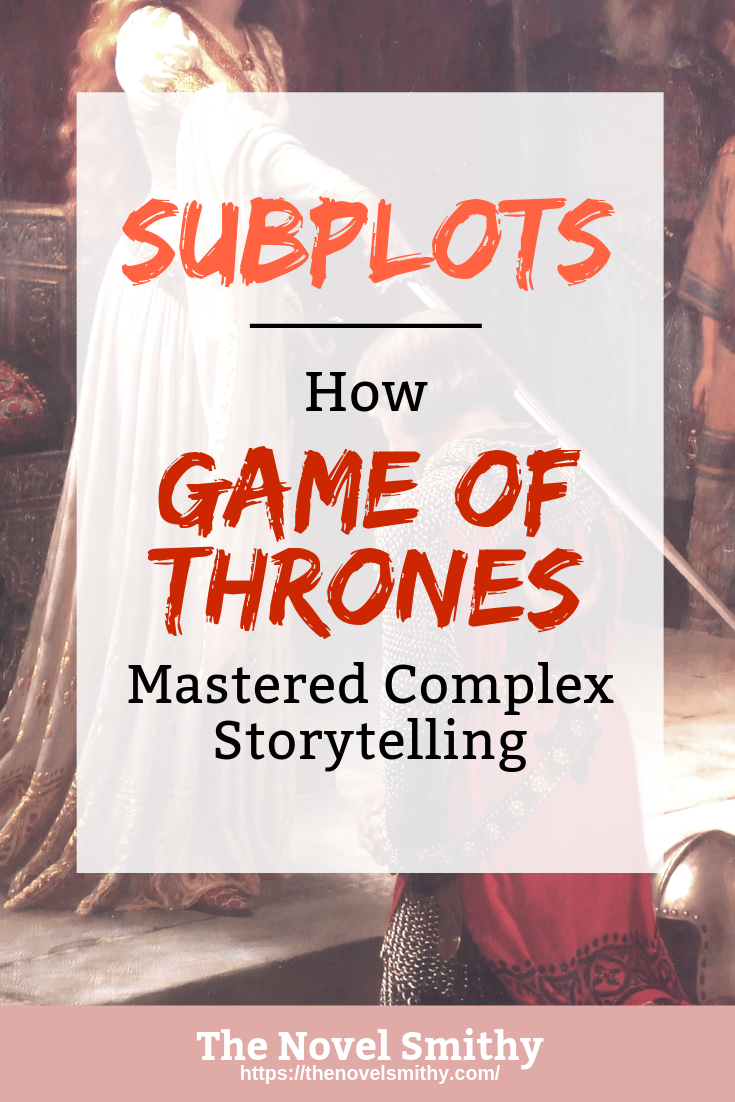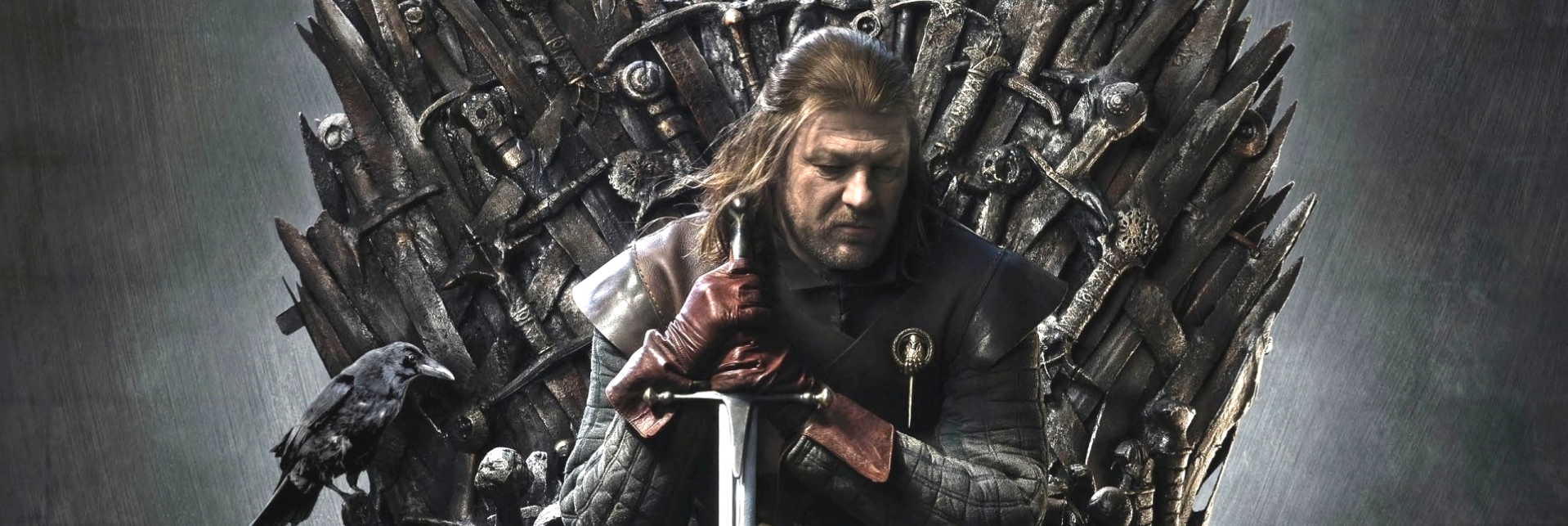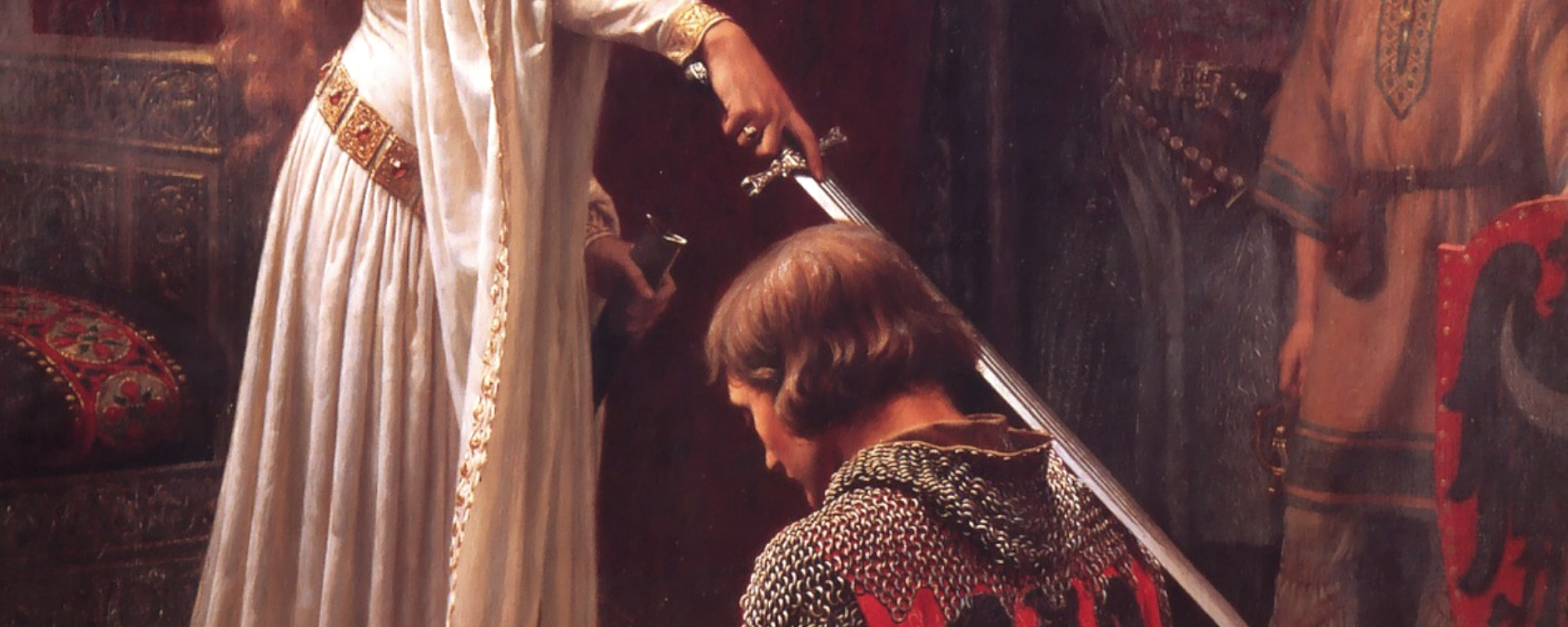Subplots: How Game of Thrones Mastered Complex Storytelling
Subplots are the lifeblood of epic fiction.
While Game of Thrones hasn’t seen a lot of praise in recent weeks (especially after its botched TV finale), it’s still one of the most successful epic fantasies around. The massive scope and deep sense of history make the books immersive, while the early seasons of the show serve as great examples of how to adapt a book series for television.
However, there’s another key element of the A Song of Ice and Fire series that makes it the complex, compelling adventure that it is—its subplots.
The True Magic of Subplots
Contents
 Usually, when we think of a book’s plot we think of the single series of events that form the beginning, middle, and end of that novel. There’s a primary conflict and a structure of some kind, but at its most basic a novel’s plot is just “the story.”
Usually, when we think of a book’s plot we think of the single series of events that form the beginning, middle, and end of that novel. There’s a primary conflict and a structure of some kind, but at its most basic a novel’s plot is just “the story.”
However, any novel hoping to create a truly epic adventure needs to go beyond this straightforward approach.
That’s where subplots come in.
You see, subplots are just like main plots at their core. They have their own individual conflict, story structure, and relevant character arcs. The real difference is one of priority—we typically see subplots as secondary to the main plot.
For many writers, this means they ignore subplots for the bulk of their story until individual moments where they suddenly become relevant.
Yet, this doesn’t need to be the case, nor should it be.
Subplots (if done well) give your reader the sense that your story takes place in a larger world, where time passes and people live their lives outside the immediate scope of your story. While most of us know subplots are a great chance to explore secondary characters, locations, and events, there’s far more to subplots than meets the eye.
The key is knowing how to use them.
In the back of the reader’s mind they should always know that your subplots are developing in reaction to the main plot, building in scale until they eventually pay off before your novel ends. Ideally, with the right planning and preparation, your subplots should naturally come into play at key moments of your story to create this effect.
The plot of your story gains more impact and weight as a result.
The 4 Plots of A Game of Thrones
For the sake of this article, I’ll only be focusing on the first book in the A Song of Ice and Fire series: A Game of Thrones. This is what the first season of the show was based on, and let’s be honest—there would way too much to cover if I tried to tackle the whole series.
However, that doesn’t mean we don’t have plenty to talk about!
What’s so interesting about this first book in the series is that its main plot is probably the least focused on of all the plotlines in the novel. It seems that, in many ways, A Game of Thrones is written as if it were three separate main plots, expertly woven into a single story.
That’s what makes this book such an excellent example of well-written subplots—these three subplots are so robust that they stand as equals to the main plot.
The Main Plot – The Game of Thrones:
The main plot of A Game of Thrones is pretty self-explanatory, seeing as it’s the namesake of both the TV series and this first book.
It’s also rather straightforward; the various houses of Westeros are competing to gain control of the Iron Throne, each for their own reasons. Some are fighting because they view the Iron Throne as their birthright, others are seeking revenge, and some are simply craving power.

This is also the overarching storyline of the whole series, running throughout all the books published so far. It guides the various subplots, with each connecting back to this struggle for power. Other than that, however, this main plot isn’t the biggest focus of A Game of Thrones (it mostly simmers in the background), so there isn’t much more to say about it.
The real intrigue comes from the three subplots that feed into it.
Subplot – The War between the Lannisters and Starks:
Of all the subplots in A Game of Thrones, this is the one most closely related to the main plot.
In many ways, this subplot could even take the place of the main plot for the first book.
This subplot begins when Ned Stark, Lord of Winterfell, agrees to become the right-hand man of Robert, the current King of Westeros. However, Queen Cersei Lannister and the rest of the Lannister family are less than happy to see him. As the political intrigue in the capitol gets worse, Stark eventually finds out that the current heir to the throne is the illegitimate child of Cersei and her brother Jaime’s incestuous relationship.
Ultimately, King Robert is killed on a hunt, the Stark’s capture one of the Lannister brothers and accuse him of trying to assassinate Ned’s child, and Ned reveals to Cersei that he knows her children have no true claim to the Iron Throne.
Soon Cersei has Ned executed and Cersei’s son takes the throne, while Ned’s first son Robb raises an army to seek revenge and declares himself King in the North.
Subplot – The Night’s Watch:
While Ned Stark and his family are struggling with the events in the capitol, one of the Stark children has gone north on a different journey.
Jon Snow, Ned’s illegitimate child, leaves home to join the Night’s Watch just before Ned leaves for the capitol. The Night’s Watch are the guardians of the Wall, which protects Westeros from the raiders to the north and from the mythical monsters some believe exist there.
However, these legends of monsters become more and more a reality as the subplot progresses. As Jon spends more time at the Wall, the Watch begins finding frozen bodies and destroyed villages, and soon discovers the Others—dead bodies that come back to life unless they’re burned. Unlike the previous subplot that was more closely connected to the main plot, the Others are the main conflict of this subplot.
While Jon is aware of some events in the capitol, the Night’s Watch commands most of his attention.
Subplot – The Mother of Dragons:
As these two subplots play out on the continent of Westeros, another subplot is brewing across the Narrow Sea on the continent of Essos.
Daenerys Targaryen, the youngest child of the previous King of Westeros (killed by Robert when he took the throne) is married off by her brother to a Khal of the Dothraki, a kingdom of nomadic horsemen whose army numbers in the hundreds of thousands. She and her brother hope to use their army to invade Westeros and take back the Iron Throne, but the Dothraki aren’t interested.

As the subplot progresses, Daenerys receives three petrified dragon eggs as gifts, and her new husband kills her abusive brother. She gets pregnant, but loses both her husband and unborn child after making a deal with a sorceress to heal the gravely wounded Khal through blood magic.
Finally, as the book comes to its end, Daenerys builds a pyre for her husband, laying the dragon eggs in it and walking in herself. The Dothraki have abandoned her after her husband’s death, and her last supporters think she is about to kill herself. However, when the fire dies down, she steps out alive holding the three live dragons that hatched from the eggs.
Of all these three subplots, this is the one least connected to the main plot in the first book.
While some in Westeros know of Daenerys and even try to assassinate her, her subplot functions mostly independently, relating back only to the main plot (while setting up events that will pay off later on). By the end of the first book, she is yet one more ruler seeking to control the Iron Throne.
How the Subplots of A Game of Thrones Connect
When looked at individually, it’s easy to see how all three of these subplots could function as their own, separate novels.
However, George R. R. Martin didn’t go that route.
Instead, he wove all three of these subplots together into a single, stronger story. They all feed back into the main plot in their own ways and, because of this, they’re all naturally connected on some level—though some more clearly than others.
This is because, at their most basic, all three subplots are concerned with who controls the Iron Throne.
The Lannisters are seeking to maintain control, while the Starks start out fighting for justice, then revenge, and then power of their own. Daenerys is also seeking a path to the throne. Of all three subplots, The Night’s Watch is the least related to this struggle for the throne, because it’s setting up events that won’t pay off until later in the series.
A Structural Connection:
Of course, if these ties back to the main plot were the only way Martin connected his subplots, they would still feel disjointed. Instead, he bolsters this connection by making sure each subplot’s structure overlaps at key moments in the story. For instance, here are the Climaxes of each plotline in A Game of Thrones:
The Game of Thrones: The lords of the north declare Robb Stark King in the North, claiming independence from the Iron Throne.
The War between the Lannisters and the Starks: Robb Stark’s army clashes with the Lannister armies at Riverrun and captures Jaime Lannister.
The Night’s Watch: Jon tries to flee the wall to support his brother Robb against the Lannisters, but it turned back and sets out beyond the wall to confront the Others.
The Mother of Dragons: Daenerys steps into her husband’s funeral pyre, only to step back out holding three live dragons once the flames die down.
Notice how, other than Daenerys’ subplot, each subplot in A Game of Thrones connects at the Climax. Each one influences the others, and this is true of most other major plot points as well.
This is of critical importance and is why these subplots feel so impactful to the broader story. While they each have their own conflict and story structure separate from the others, they all tie back together at the most important structural moments of the book: the First Plot Point, the Midpoint, and the Climax.
How to Write Subplots in Your Novel
Now that you know how A Game of Thrones leverages its subplots, it’s time to learn how to use subplots in your own novel. The key here is to work in stages, planning your story in such a way that you can see both the big picture of the main plot, as well as the smaller subplots you’re trying to weave into it.
First – Structure Your Subplots:
Your first step is to plan each of your individual subplots as if they were their own standalone story. After all, subplots are just micro stories told within your larger novel. Your goal starting out is to apply a story structure to them the same way you have for your main story.
Make sure each of them has a:
Second – Compare Their Structures:
Now that each of your subplots have a structure of their own, you can find ways these structures naturally overlap.
The easiest way to do this is to write out your subplot’s plot points on index cards and then lay those cards out in a timeline. This is actually the method I recommend for outlining your entire novel in The Ten Day Outline, and it works excellently here as well!
Once you’ve laid out each of your subplots within their own timeline, you want to line them up based on their chronology within your story as well. For example, the Midpoint of Subplot A might occur just before the Midpoint of Subplot B. If so, you’ll want to line their cards up to show this, so you can easily know where everything is happening within your story and subplots at a glance.
Third – Align the Major Plot Points:
This is where we get to the hard part of writing effective subplots.
With a chronology created, you now need to shift the events of your story around to overlap the major plot points of your subplots so they occur close together (if not at the same time). This is most important for their First Plot Points, Midpoints, and Climaxes, since this trio forms the backbone of your story.
There are a variety of ways to approach this:
Change the Story Itself: Probably the easiest to understand, this is also the hardest for most writers to put into practice because it requires changing their vision of their story. This simply requires you to change the way events happen until the major plot points of your subplots happen at similar times.
Change How You Tell the Story: Alternatively, you can change the way you tell the story without ever changing the story itself. For instance, if the Midpoint of one subplot occurs two months before the Midpoint of another subplot within the timeline of your story, you could shuffle the order in which you tell that story by revealing these events to your reader at the same time—even though they happened far apart. The effect is similar to if both subplots occurred at the same time.
Of course, not every subplot needs to overlap with every other subplot at each main plot point. For instance, if you had four subplots, having two or three overlap would usually be enough to create the effect you’re after—though more is always better in this instance.
Fourth – Create an Impact:
Finally, and perhaps most importantly, you need to make sure these subplots matter to both the main plot and to one another.
You see, in A Game of Thrones, each of the three subplots affect the main plot, but they also affect each other. Of course, it doesn’t stop there—they all affect each other most strongly where they overlap. Jon Snow flees the Night’s Watch because Robb is marching to war against the Lannisters. Jon’s subplot is deeply affected by Robb’s.

To do this in your novel, simply find ways the events of one subplot matter to another.
Perhaps one character hears news of another character from a different subplot, as Jon did. Or maybe, like with Daenerys, nothing in their subplot matters to another immediately, but the reader can see how those events will matter later on. Either way, you want readers to experience the major plot points of your subplots close together, while also seeing how those plot points matter to both the main plot, and all the other subplots alongside it.
The Value of Writing Subplots
When pulled off correctly, subplots can be the difference between a memorable, impactful story and a “just ok” one.
Subplots have the power to make your story feel real, with their many moving parts coming together into a satisfying, epic tale. If you’re planning any kind of sprawling adventure, you owe it to your readers to explore the many possibilities subplots offer.
Fortunately, writing subplots well doesn’t have to be confusing. By trying out the method above, you can structure your subplots so that they feed into your main plot, while still retaining their own identity and, most importantly, strengthening each other.
After all, it’s all about how they connect! 🙂


First time I’ve read about subplots and how valuable they are when you create a whole new world, which I am attempting to do. This makes so much sense!
This was really helpful for the story I am writing now. I did choose to use a spreadsheet instead of index cards, but the idea is the same. Thank you for making me lay it out, or I would have had a subplot hole!